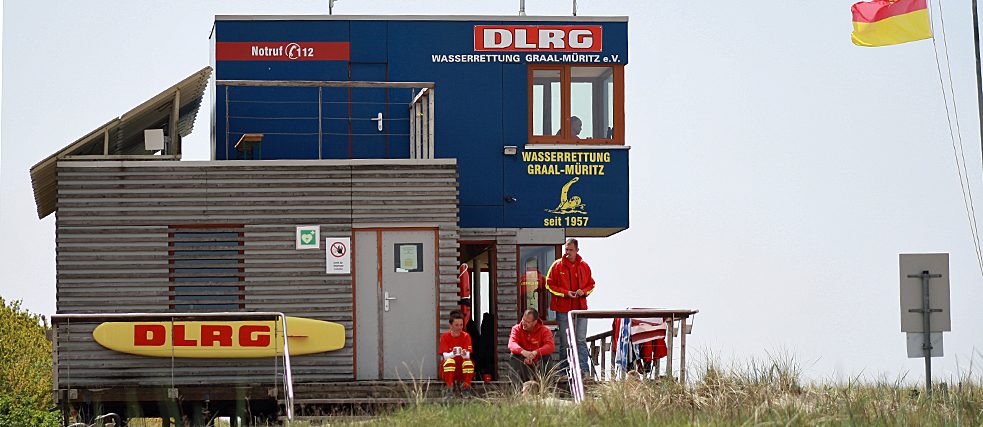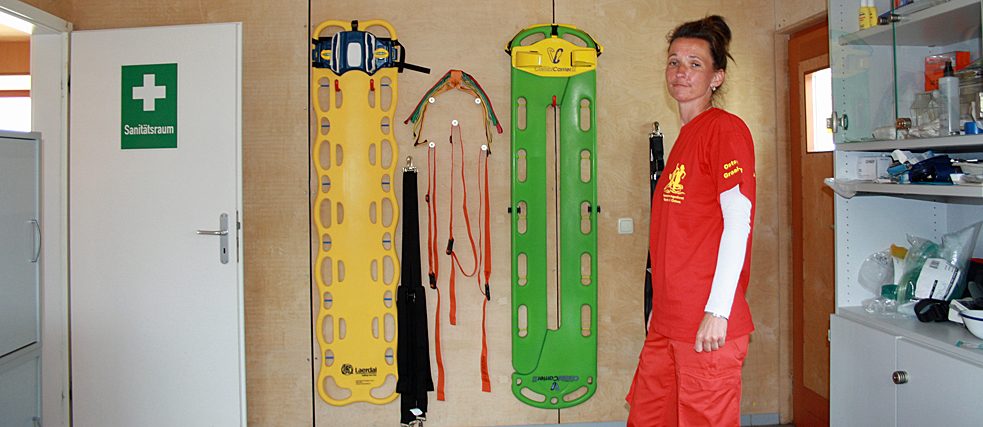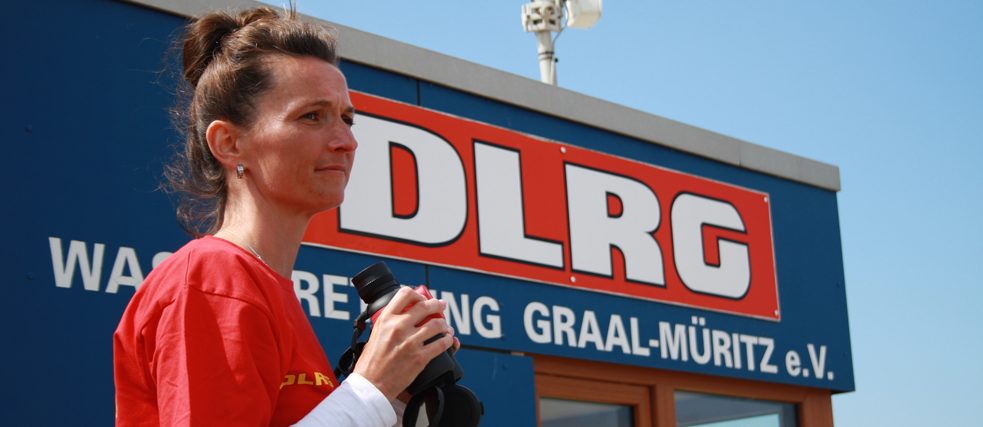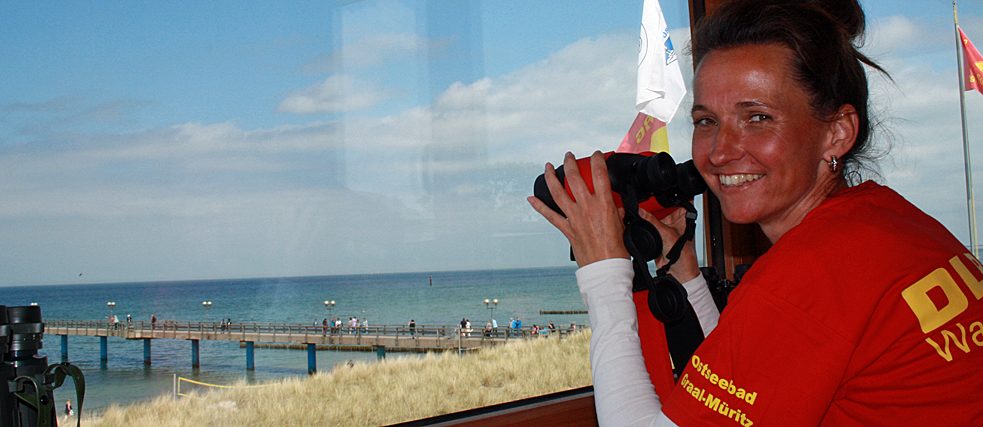The love that makes Susann Stark spend her weekends in a tower on a Baltic Sea beach isn’t entirely innocent – not at least in the summer.
By Ula Brunner
From May to September the beach is her second home. For four years, the delicate woman with smiling eyes and a clear voice, born in 1980, has been a member of the water rescue service team of Graal-Müritz, an idyllic Mecklenburg seaside spa. “Actually, it was my partner who got me here: he’s the first chairman of the service and has been doing this all his life”, says the 38-year-old lifeguard. Full-time, she works in a nursing service. In her spare time she watches over the beach with other volunteers of the German Life-Rescue Society DLRG.
 Fortress in the dunes: the main tower | Photo (detail): © Ula Brunner
Fortress in the dunes: the main tower | Photo (detail): © Ula Brunner
There are three rescue towers here. The main tower, in which Susann Stark mainly works, is in service throughout May to September. A total of twelve “watch keepers” – that's what the lifeguards are called – are on active duty there every day in peak season. Susann’s workday starts at nine o'clock: “In the morning we first raise the flags, turn on the radios, record the weather data and make coffee. And if everything stays calm, there’s time for a late breakfast.” A narrow staircase leads up to the first floor, the central observation room. Always within reach is a pair of binoculars. Always within reach is a pair of binoculars.”?] Usually there are two lifeguards up here together so that they have a good view of whether someone is seeking help with a hand signal. Then the water rescue service goes into action. Luckily, says Susann, it seldom happens that they have to save someone from drowning. But she has seen swimmers frivolously cause a rescue mission: “Once a young man swam very far out and then wildly waved his hands – a sure sign for us that someone is in danger. We hurried out with the boats and it turned out he just wanted to wave to daddy.”
 The medical room on the ground floor | Photo (detail): © Ula Brunner
The medical room on the ground floor | Photo (detail): © Ula Brunner
Much more common than accidents in the water are what are called “first aid emergencies”. Wood splinters in the foot, insect bites, circulatory collapse, low blood sugar or heart attacks are taken care of daily in the first aid room on the ground floor.
 The most important tool: the binoculars | Photo (detail): © Ula Brunner
The most important tool: the binoculars | Photo (detail): © Ula Brunner
Every two to three hours, another pair of lifeguards relieves the pair in the observation room at the top of the tower, because by then concentration has begun to flag. Moreover, heat builds up in the small room. The regular patrol shifts on the Baltic Sea are a welcome change. “Because then you have something of the beach life”, says Susann. Duty usually ends at 6 pm. But often the whole crew stays on for a few hours: “We sit together, maybe even jump into the water ourselves – we‘re just a great team”. Her 12-year-old son is also already active in the youth group of the rescue service – because he admires his mother’s work. That Susann sacrifices every free weekend and even a few hours of her evenings for the water rescue service doesn’t bother her. On the contrary, “For me, there’s no place more beautiful. For us, the whole summer is really life on the beach.”
 “We’re just a great team.” | Photo (detail): © Ula Brunner
“We’re just a great team.” | Photo (detail): © Ula Brunner

 Fortress in the dunes: the main tower | Photo (detail): © Ula Brunner
Fortress in the dunes: the main tower | Photo (detail): © Ula Brunner
 The medical room on the ground floor | Photo (detail): © Ula Brunner
The medical room on the ground floor | Photo (detail): © Ula Brunner
 The most important tool: the binoculars | Photo (detail): © Ula Brunner
The most important tool: the binoculars | Photo (detail): © Ula Brunner
 “We’re just a great team.” | Photo (detail): © Ula Brunner
“We’re just a great team.” | Photo (detail): © Ula Brunner
Comments
Comment